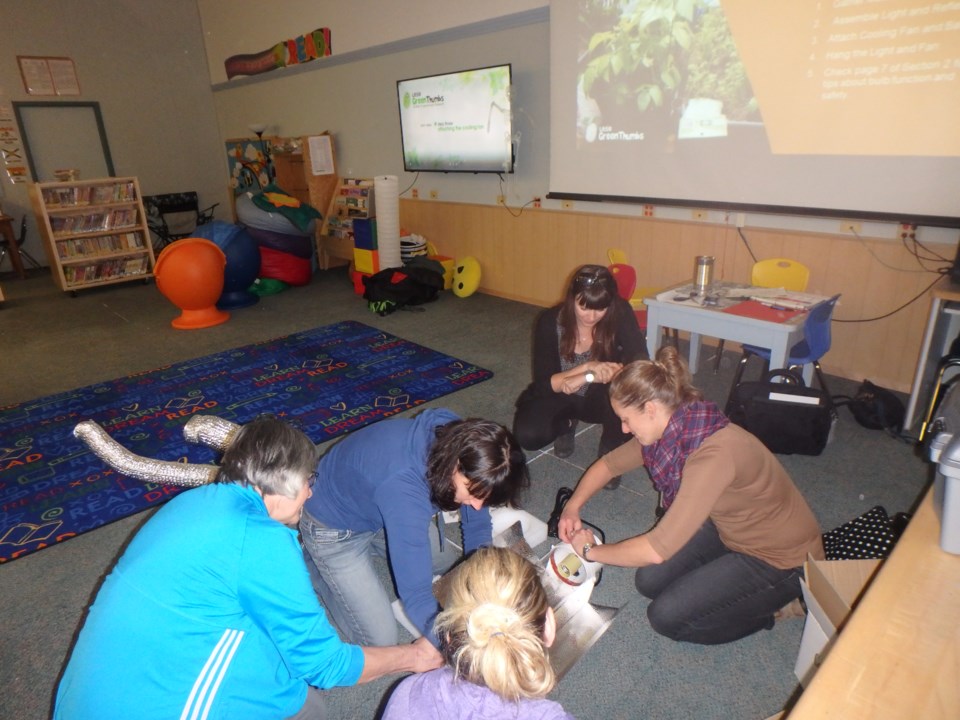The students of Ardmore School are showing off their green thumbs. As the first local school to take on the Little Green Thumbs Project, they will be laying the foundation for others interested in giving the unique gardening program a try.
The students of Ardmore School are showing off their green thumbs.
As the first local school to take on the Little Green Thumbs Project, they will be laying the foundation for others interested in giving the unique gardening program a try.
Started in Saskatchewan, the Little Green Thumbs Project has students working together to grow a garden, teaching them about composting, seeding, watering, and harvesting.
"Our Little Green Thumbs is going to be growing some fruits and vegetables that we will be doing a healthy living project with. Additionally, because we are working with the Beaver River Watershed Alliance (BRWA), we're also going to be growing some riparian area plants and going out and planting them in the spring," explained Kristy Tetreau, preschool instructor at Ardmore.
Through her work on both the Lakeland Industry and Community Association (LICA) and the BRWA boards, Tetreau has learned the importance of teaching youth about where their food comes from, and healthy eating habits.
The garden is set-up in their learning commons. Once the seeds have been planted and grown, and the weather starts to warm up, they are hoping to relocate the plants to an outdoor garden.
"The students are involved from start to finish. They get to expand the peat pots, they get to select their seeds and put them in, watch them grow, transplant them to the growing trays, and they also get to be responsible on a rotation throughout the school for checking the water and checking for pests," Tetreau expressed. "Our goal is to also add an outside garden. We will grow fruits and veggies inside and then transfer them to our outside garden."
Half of the classes at Ardmore School will see an addition to their classroom, worms. The creepy crawlers are being used to teach the students about composting, with a bit of a healthy twist.
"The classrooms involved get to feed their worms their scraps. It has this great way of encouraging healthy living, because if you bring an apple to school, you get to feed the apple core to the worms," noted Tetreau.
The program fits in well with the school's curriculum.
As a 4-H school, the students are already learning about agriculture, but this just adds another layer to mix.
"It was kind of a natural fit," expressed Tetreau.
Once the food has grown to its full size, the students will harvest it and turn it into a healthy snack.
Ardmore School parent council funded the program that will tie into the studies of all grade levels.
The project also has teachers getting their hands dirty. Last week, they were busy building the gardens that will house the plants, and training for the program, not to mention giving the worms a place to call home.
Erin Ritchie, education and outreach coordinator with BRWA, will also have a role to play in the Little Green Thumbs Project.
"I am going to be going into the classrooms, giving presentations to the students, whether they are in preschool or Grade 8, talking about the importance of plants, our watershed, our wetlands, needs of plants, soil, and different kinds of cycles that plants play, and their role in our ecosystem," she explained.
By going into the classrooms and teaching students about where their food comes from, and giving them a hands-on experience, Ritchie is hoping they will go home with a better understanding of the work that goes into what is put in front them at the dinner table.
"Normally, the kids feel a bit more disconnected if they don't have this hands-on experience. A lot of kids might think that food comes from the grocery store, but they don't realize there is a whole other side to it. It really brings the community together, because we get parents participating and the community gets really excited about it all," said Ritchie.
